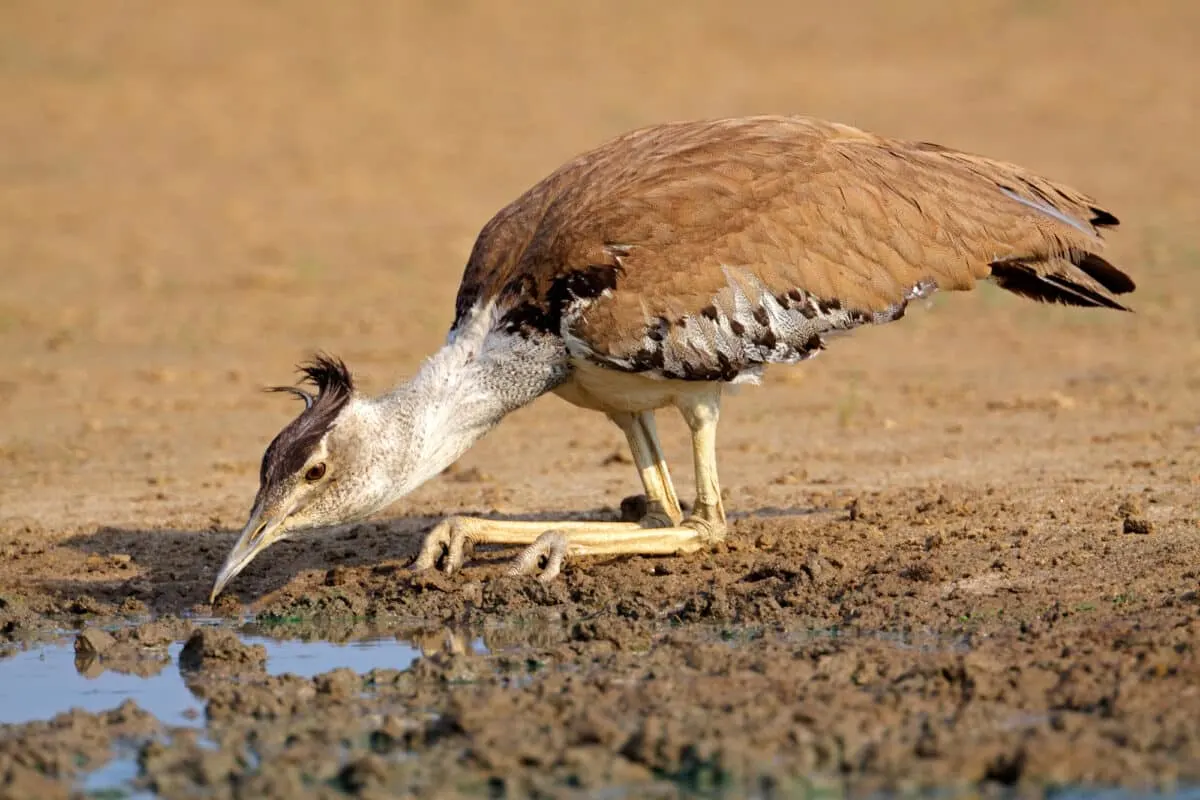In this post we’re going to acquaint ourselves with the heaviest bird capable of flight, namely, the Kori Bustard.
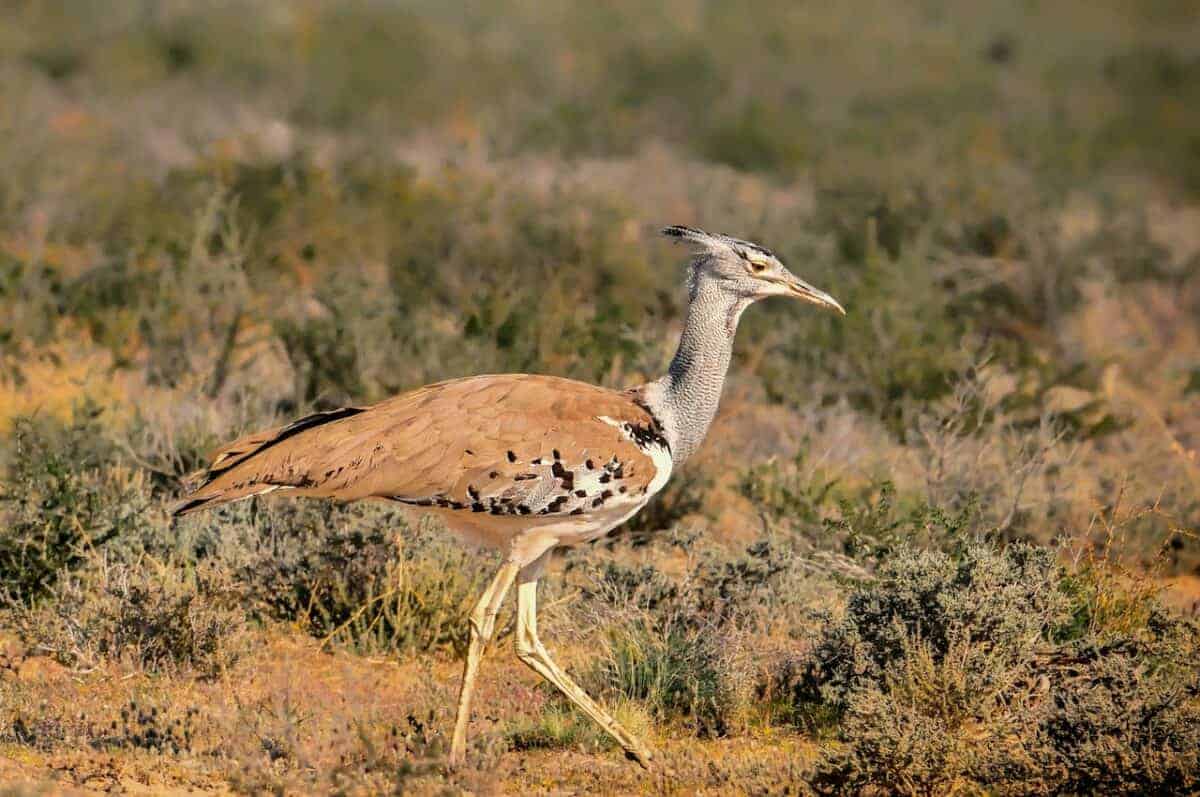
The Kori Bustard, also known as the African bustard, is one of Africa’s most striking and fascinating birds. It is the largest member of the bustard family, a type of terrestrial bird known for their spectacular courtship displays.
The significance of the Kori Bustard lies in its remarkable ability to adapt to the diverse range of habitats found in Africa. Whether it’s the Kalahari’s scrublands or the Serengeti’s savannas, the Kori Bustard has adapted and survived in these challenging environments for millions of years.
The Kori Bustard is an essential indicator of the ecosystem’s health. Because it is at the top of the food chain, its presence or absence can be used to track changes that are taking place in the environment.
Join us as we explore the various aspects of the Kori Bustard, including its habitat and geographic range, physical attributes, behavioral traits, and evolution. Furthermore, we will shed light on the bird’s cultural significance and the challenges it faces in the realm of conservation.
Key Points
- Kori Bustards inhabit various grassland areas in Africa, ranging from Senegal to Ethiopia and southwards to South Africa.
- Kori Bustards are the heaviest flying birds, with adult males weighing anywhere from 18 to 42 pounds.
- They are famous for the elaborate courtship rituals they perform.
- They have evolved over millions of years and are closely related to the extinct giant moa.
- Their physical adaptations, such as long necks, powerful legs, and mighty wings, help them thrive in their grassland habitats.
- The Kori Bustard is a keystone species, shaping vegetation structure through their foraging behaviors.
Background Information on Kori Bustards
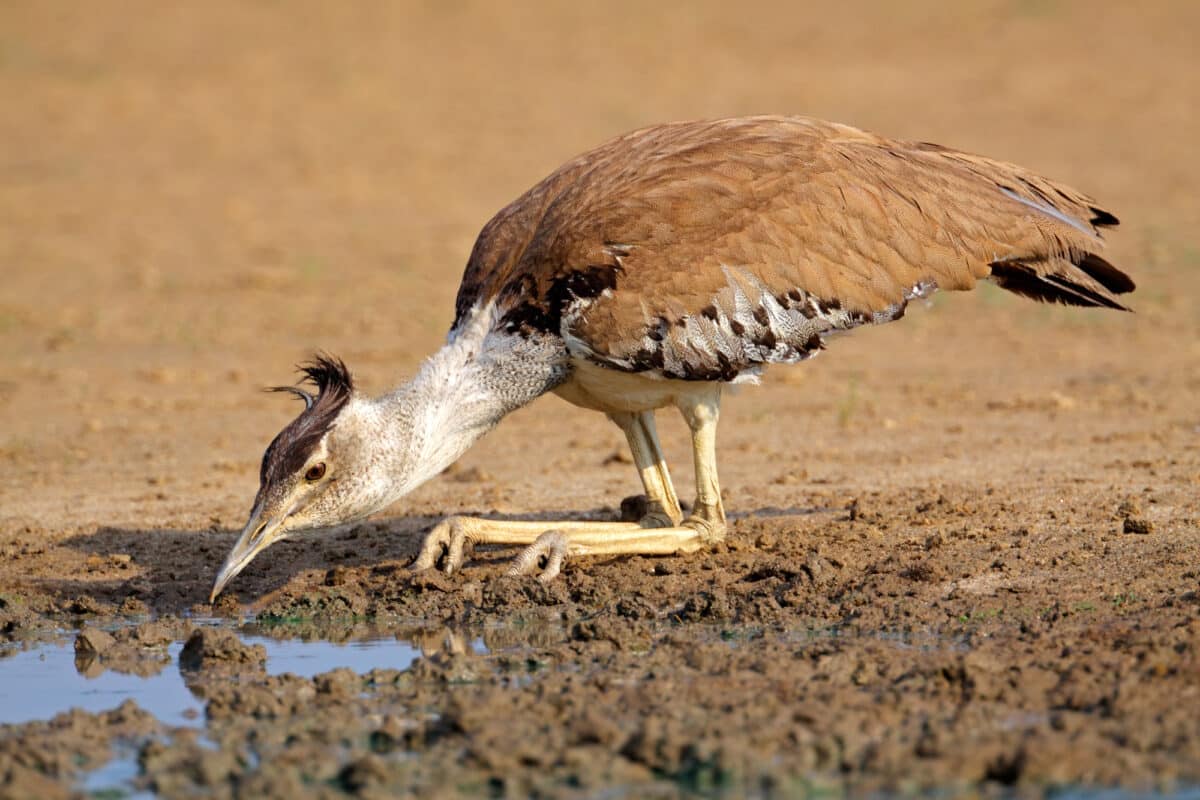
Kori Bustards are the largest species of bustards known for their unique physical attributes and fascinating behavior. With the scientific name of Ardeotis kori, these birds belong to the family Otididae.
| Traits | Description |
|---|---|
| Weight | Adult males: Up to 44 pounds |
| Adult females: Up to 24 pounds | |
| Wingspan | Up to 8 feet |
| Size | Adult males: Approximately 4 feet tall |
| Adult females: Approximately 3 feet tall | |
| Diet | Omnivorous, including insects, seeds, small mammals, reptiles, snakes, lizards, and carrion |
| Habitat | Grasslands, Savannah woodlands, and dry grasslands in Africa |
| Conservation Status | Vulnerable |
| Colors | Plumage: Grayish-brown with black, white, and chestnut stripes |
Habitat and Geographic Range of the Kori Bustard
Kori Bustards inhabit various grassland areas in Africa, spanning from Senegal in the west to Ethiopia in the east and southwards to South Africa.
They reside in the Savannah woodlands and dry grasslands of Botswana, Namibia, Zimbabwe, and other southern African countries. Kori Bustards prefer open habitats with short grass cover but occasionally feed in areas with tall grass.
Physical Characteristics
The Kori Bustard is a massive bird with spectacular physical features. Other than their sheer size, their striking plumage and ominous appearance are what they are famous for.
With an average height of about 4 feet (1.2 meters) and a wingspan of up to 8 feet (2.5 meters,) this bird is the heaviest flying bird on Earth. Adult male Kori Bustards can weigh up to 44 pounds and stand at 4 feet tall. Meanwhile, female Kori Bustards are slightly smaller, with a weight of up to 24 pounds and a height of 3 feet.
Despite their impressive weight and height, Kori Bustards are still airborne – making them the heaviest bird still capable of flight.
These birds have a distinct sexual dimorphism seen in their size, with males being much more significant than females. Their plumage is a grayish-brown marked with black, white, and chestnut stripes. These stripes are more prominent in males, with females having more subdued colors.
Their neck is long and slender, and their head is crowned with a thick mohawk-like crest of feathers. Further, Kori Bustards also have stout, muscular legs. They enable them to run swiftly and jump up to 9 feet in the air.
Behavioral Traits and Diet
Kori Bustards are non-migratory birds active during the day, especially during the early morning and late afternoon. Their elaborate courtship rituals are one of their most impressive traits. They involve the males inflating their necks and erecting their crests while simultaneously booming vocalizations. These displays attract females, and males may mate with multiple females.
Their diet is predominantly omnivorous. These birds feed on various plant and animal materials, including insects, seeds, small mammals, reptiles, snakes, lizards, and even carrion.
Kori Bustards are a keystone species as their foraging behaviors and selective feeding patterns are essential in shaping the vegetation structure of their habitats.
Take a look at: Swans Defend Against Invading Raccoons
How the Bird Has Evolved Over Time
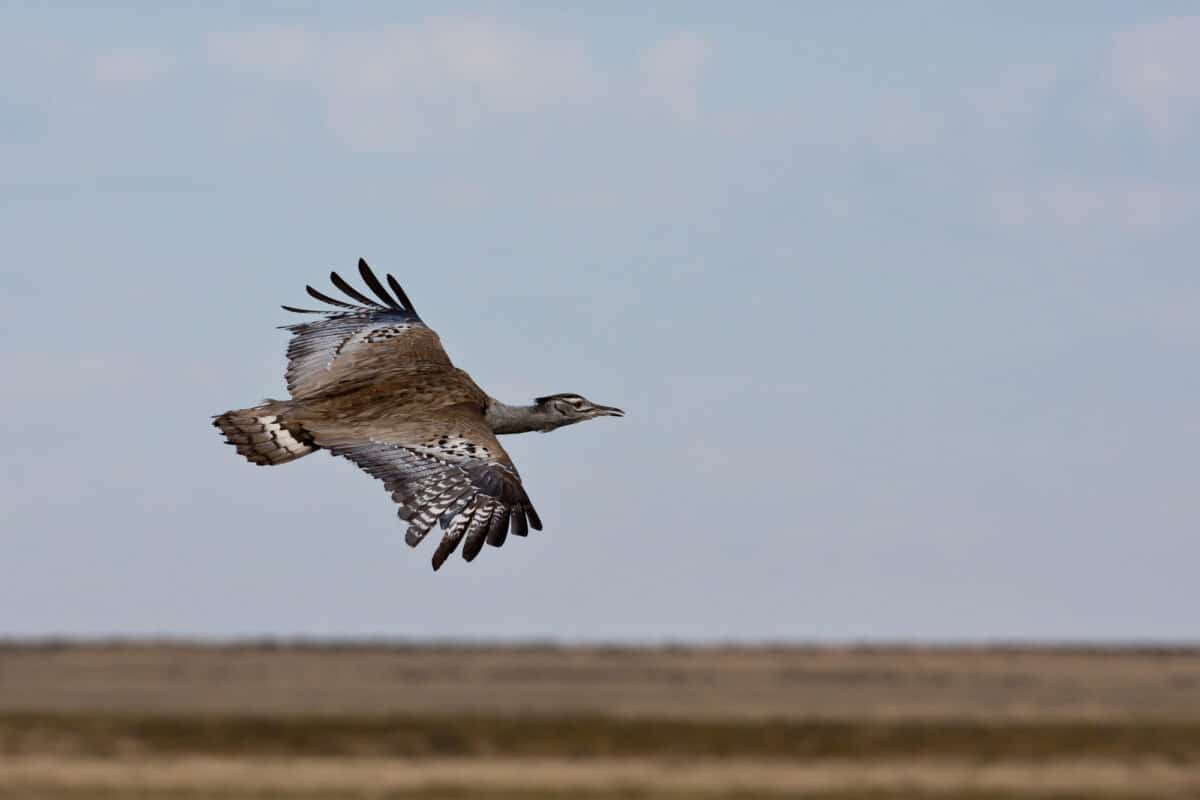
Kori Bustards have existed on Earth for millions of years. Fossil records show that they shared the planet with various prehistoric species. DNA studies on this bird species suggest they are closely related to the extinct giant moa, a group of flightless and long-extinct birds that originated in New Zealand.
Over time, Kori Bustards have continued to adapt and evolve in response to environmental changes and natural selection. They have remained one of Africa’s most iconic and fascinating bird species. Their size and physical features has made them essential cultural and traditional symbols in various African societies.
The Heaviest Bird Capable of Flight
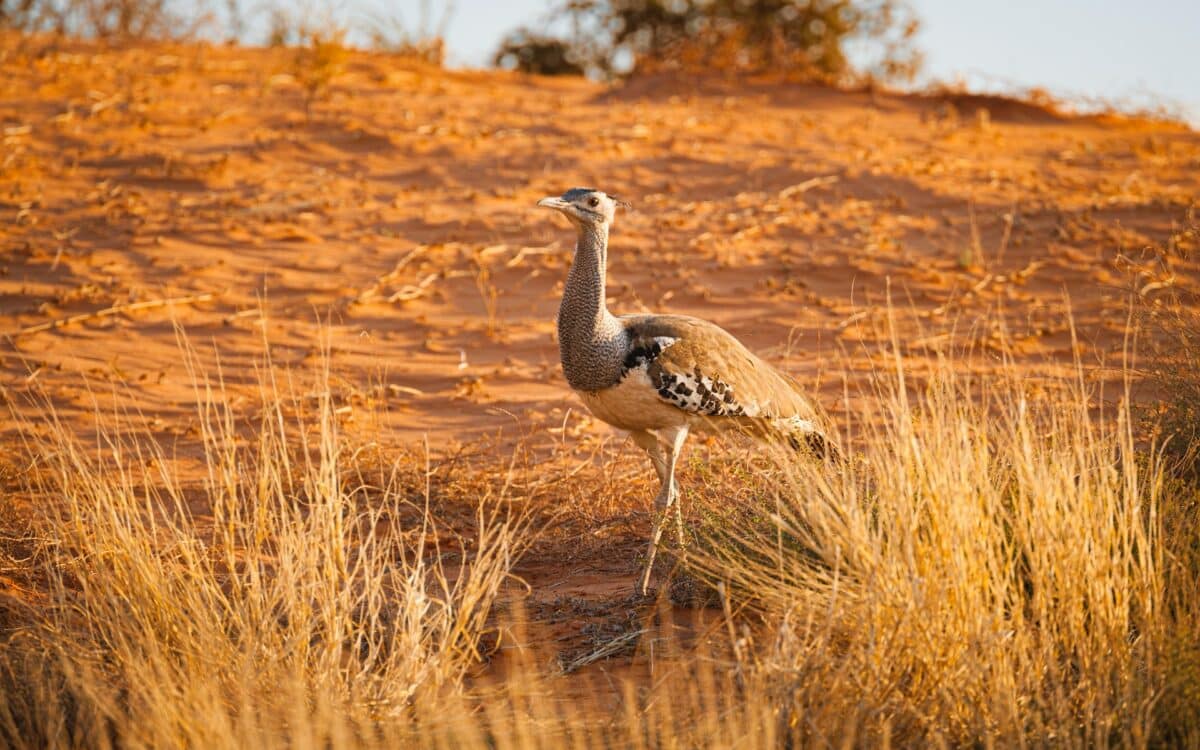
Perhaps the most impressive feature of Kori Bustards is their weight. These majestic birds are the heaviest capable of flight, despite adult males weighing anywhere from 18 to 42 pounds.
That’s around two to three times the weight of an average turkey and heavier than most small dogs! Despite their remarkable weight, Kori Bustards can still fly thanks to their mighty wings.
Read about two other massive birds here.
Surviving in their Environment: Defence Mechanisms
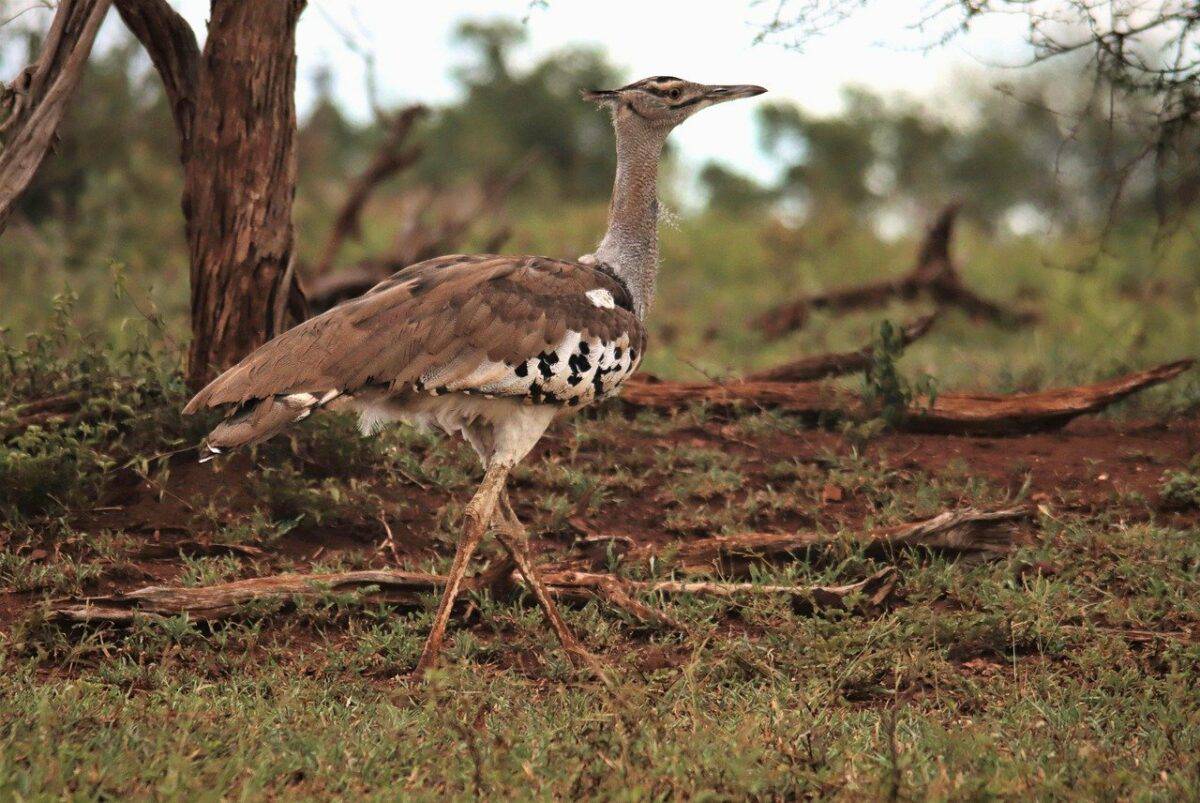
Kori Bustards’ physical features allow them to thrive in their natural habitats, typically arid or grassy. Their long necks and legs enable them to spot predators from afar while tiptoeing through the grass to stay hidden.
The Kori’s wingspan provides the necessary lift to soar above the tall grass and navigate around obstacles, allowing them to take flight when needed.
Additionally, the power in their legs enables them to run quite fast, which is handy for escaping peril. Their mighty wings can also deliver strong blows to their predators if they are cornered.
Kori Bustards In Culture
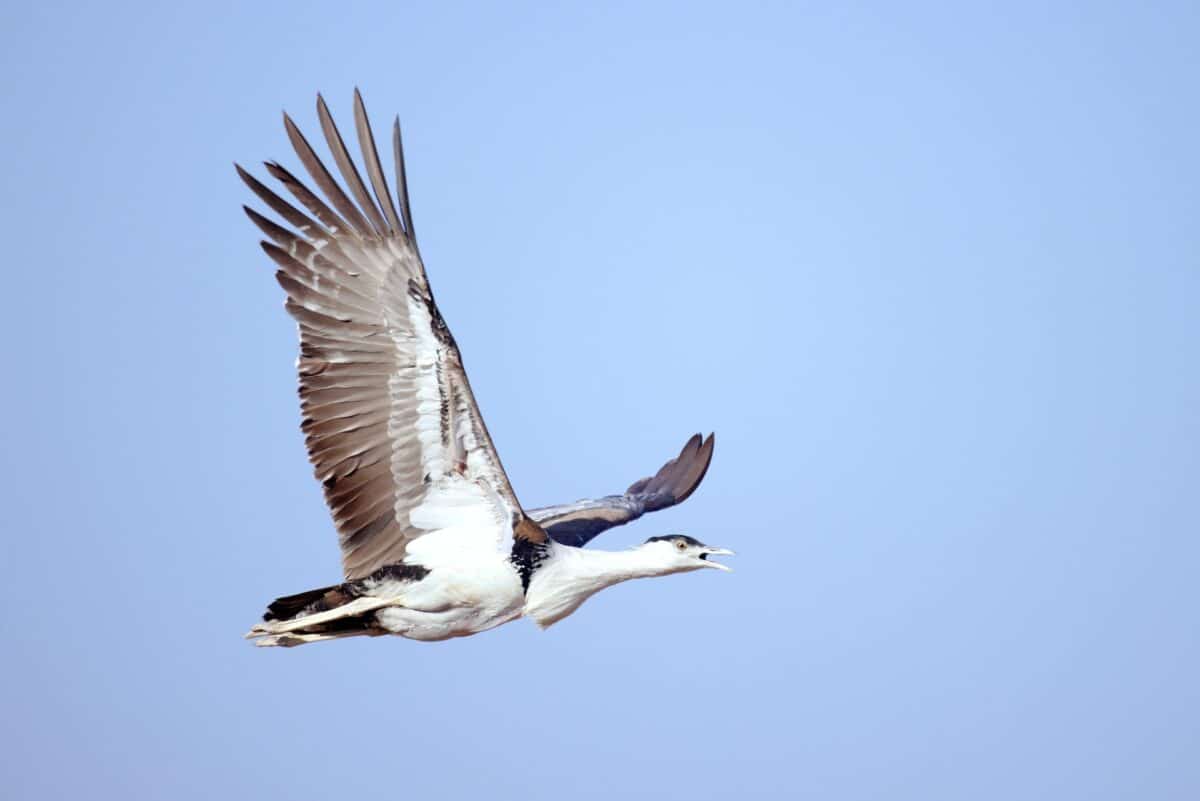
Moreover, the Kori Bustard has always been integral to African culture and mythology. In many African cultures, the Kori Bustard is believed to bring good luck and is associated with nobility and royalty. Additionally, its meat has long been considered a delicacy in many African societies. As a resuly, hunting it has been a popular pastime for centuries.
Conservation Efforts
The Kori Bustard population has declined in recent years. The species is now considered ‘vulnerable’ according to the International Union for Conservation of Nature (IUCN). Habitat loss, climate change, poaching, hunting, and disease have significantly contributed to their decline. Moreover, collisions with power lines are another common reason for the death of Kori Bustards.
Conservation organizations and governments are taking steps to protect Kori Bustards and their habitat. For example, the creation of protected areas, including national parks and wildlife sanctuaries, is helping to conserve important habitats for these birds.
Additionally, campaigns are being launched to increase public awareness about preserving Kori Bustards and other wildlife species essential to maintaining ecological balance.
Conservation organizations are researching to understand the behavior, ecology, and distribution of the Kori Bustard. Finding out the exact number of these birds left in the wild is crucial to develop effective conservation plans. Laws on hunting and poaching have been enacted in some countries to prevent the loss of these magnificent birds.
It’s A Wrap!
After discussing Kori Bustard’s ecology, morphology, and conservation status, it is clear that this iconic African bird plays a significant role in its ecosystem. Other than being a keystone species, this bird contributes to the distribution of seeds and insects, prevents soil erosion, and provides prey for predators.
This bird has many other talents other than being the heaviest bird capable of flight – such as its impressive courtship displays and ability to survive in harsh habitats.
However, the conservation status of the Kori Bustard is of great concern. Threats include habitat destruction, hunting, and collision with power lines. Therefore, it is essential to implement conservation measures to protect the Kori Bustard and its habitat.
Thank you for reading this article! Read this post to uncover another giant bird (sadly flightless, though.) Or dive into the heart-melting world of baby pigeons.
- Magpie Bird Is Reunited with Her Dog Best Friend - April 24, 2024
- Dog Saves Another Dog From Drowning in Fish Pond - April 23, 2024
- Man On Motorbike Rescues Cat From Highway - April 23, 2024

